29th AHSN CONFERENCE
6-7 AND 9-10 FEBRUARY 2023
THE UNIVERSITY OF SYDNEY
UPDATE FROM THE ORGANISERS
This is an update from the AHSN2023 organisers! We’re looking forward to meeting all delegates in Sydney next year, February 2023, at the University of Sydney’s Abercrombie Business School. We’re going to kick things off on 6 and 7 FEBRUARY 2023 with two days of online presentations, followed by two days of in-person presentations on 9 and 10 February 2023.

Abercrombie Business School
The Call for Papers is drawing to a close, so if you’re still trying to decide if you’d like to submit an abstract, please do so right away and go to: https://ahsnhumourstudies.org/abstracts/
You will need to create an account in your own name to submit an abstract. We apologise but we have had some minor technical issues with the site, so if you can’t submit via the submissions portal which we believe is now operating correctly, please try another browser or let us know via email (see below). In addition to the main theme of humour as a human right, other topics will be considered as well.
If you are a postgraduate student or know of others who may like to present their work on humour and/or human rights, please share this email with friends and colleagues. There are 5 postgraduate scholarships available to cover the registration fees, so getting in early as possible is a good idea. Please indicate your interest in a fee waiver/scholarship in your abstract submission.
We welcome especially early career colleagues to submit proposals. There will be an opportunity to network and to join the AHSN ECR community, no matter where in the world you’re located (although we do note that online slots will be limited to the two days 6-7 February, and Australian Eastern Standard Time for presentation and attendance).
What to expect?
You can expect sessions in both online and personal attendance that cover a range of topics, from safeguarding human rights with humour during periods of revolution, dictator comedy to challenge tyrannical regimes, to alt.right humour and the digital, Indigenous laughter, anti-agist comedy campaigns, humorous disability activism, the line between offensive jokes and reality, cringe comedy, and plenty more.
We are busy working behind the scenes to make sure that you’ll have a good time whether online or in Sydney, perhaps both! There’ll be online and in-person conference events that you’ll be able to attend as part of the program. You can take a peek at previous conferences here to get an idea of what to expect: https://ahsnhumourstudies.org/annual-conference/events-archive/. More to come soon!

Sydney Harbour at its best.
The organising team is looking forward to meeting you next year, either online or in person!
For all enquiries, please do not hesitate to contact us at: conferenceahsn@gmail.com
AHSN2023 Committee
Ben Nickl, The University of Sydney, Convenor
Rodney Taveira, The University of Sydney
Mark Rolfe, UNSW
Reza Arab, Griffith University
Report on the 2022 ISHS Conference
University of Bologna Centro Universitario, Bertinoro
29 June – 2 July
AHSN Review Panel member, Conal Condren, presented a long-awaited keynote at the International Society of Humor Studies 2022 Conference on 29 June. Conal is an Honorary Professor in the Institute for Advanced Studies in the Humanities (University of Queensland) and an Emeritus Scientia Professor at the University of New South Wales, Sydney. He works both as a political philosopher and intellectual historian. Chronologically, his work ranges from the 14th to the 18th centuries, concentrating mainly on persons and problems that raise broader issues. He has developed his own approach to the nature and study of intellectual history: this requires the integration of materials beyond the boundaries of “politics” or “theory” and the layering of different types of context. His work places emphasis on pragmatics (word use and change) and on historical interpretation. He has also written on non-historical areas of political theory/philosophy: one major work addresses the logical analysis of interpretative concepts.
Conference on 29 June. Conal is an Honorary Professor in the Institute for Advanced Studies in the Humanities (University of Queensland) and an Emeritus Scientia Professor at the University of New South Wales, Sydney. He works both as a political philosopher and intellectual historian. Chronologically, his work ranges from the 14th to the 18th centuries, concentrating mainly on persons and problems that raise broader issues. He has developed his own approach to the nature and study of intellectual history: this requires the integration of materials beyond the boundaries of “politics” or “theory” and the layering of different types of context. His work places emphasis on pragmatics (word use and change) and on historical interpretation. He has also written on non-historical areas of political theory/philosophy: one major work addresses the logical analysis of interpretative concepts.
His keynote, entitled Academic Myth and the Political Origins of a Concept (abstract below), challenged some of the received wisdom about humour theory and its history and was well-received by delegates attending the ISHS.
Abstract
The lineage of humour theory from Plato to Kant is familiar. My argument however, is that this is a genealogical myth, a creature of academic politics, advertising and legitimating a new field of university study and its concerns. Such promotional pedigrees are common in academia. In this case, there is a specific mechanism: the treatment of laughter as an expression of humour. This allows a prestigious pedigree to reinforce the commonly asserted nostrum that humour is a universal. If we do not project a universal awareness of humour from its localised ubiquity, then we can ask afresh when and why was a concept of it first developed. The general shape of the narrative will be familiar but needs placing in the context of laughter being taken as an expression of aggression, despite its recognised physiological benefits. Freed from popular humoral theory, the word humour first became an occasional synonym for jest in the mid-seventeenth century; then by the early eighteenth, it is sometimes used as a covering term for a variable range of more specific phenomena, such as jesting, facetiousness, occasionally satire, and often wit. This process was the creation of a rough semantic field that, with augmented content, is now in use. A sense of humour only comes in the nineteenth century, a consequence of an extension of the meaning of sense to mean faculty, so becoming of interest in the emerging discipline of psychology. It is also only from the nineteenth century that humour becomes a loan word in many other languages, sometimes with altered meaning. Politics may also help explain why the invention of humour, as we now understand it, was a contingent English language phenomenon. Seventeenth-century England was notoriously violent and insecure. The assumed aggression of laughter was seen as part of the problem. Humour, came to sanction certain sorts of laughter as safe, just as there were places in which it might be contained as acceptable. I suggest, then, a duality of political explanation at odds with the mythology of humour studies: academic politics helps account for a spurious tradition of humour theory, while the conceptualisation of humour became an answer to political insecurity exacerbated by the aggression thought inherent in laughter. If this argument is along the right lines, the implications for the routine affirmation that humour isa universal should be obvious.
Report on Humour Studies Events,
School of Languages and Cultures,
The University of Queensland,
INPRA Conference, 20-23 June 2022
- Humour Symposium, 20 June
Two humour scholars presented keynotes for a Symposium on Humour as part of the 2022 INPRA Conference. The keynote speakers were AHSN Review Panel Member Meredith Marra, Victoria University of Wellington, New Zealand, and Marta Dynel, University of Lodz, Poland.
Program available at: https://languages-cultures.uq.edu.au/files/27375/Humour%20symposium%20-%20program.pdf
Link: https://languages-cultures.uq.edu.au/event/session/5499
AHSN member Nicholas Hugman writes:
On June 20, The University of Queensland was host to a humour symposium. As a preface to the InPra conference, held at the same location, the symposium saw humour scholars from different parts of the country (and, for the first time in a while, from overseas) gather to present and discuss research on intercultural perspectives on humour.
While all the work presented was linguistic and pragmatic in nature, it was gratifying to see such a variety of methodological and theoretical approaches, exemplifying the diversity of the field. For instance, the two keynote speakers, Meredith Marra and Marta Dynel (from Victoria University of Wellington and The University of Lodz, respectively), spoke on two very different facets of humour. Meredith discussed the way that humour can be used to create and maintain group boundaries in the workplace. In particular, its use as both an exclusionary and inclusionary discourse strategy can reinforce cultural groupings, with those lacking the sociopragmatic understandings of certain humour strategies potentially unable to gain access to certain groups. Conversely, Marta presented on different facets of aggression which can underlie humour online. She examined forum posts on two subreddits, RoastMe and IncelTears. The former is centred on individuals who post pictures of themselves and request to be ‘roasted’, i.e., abused or mocked in a jocular way. Conversely, IncelTears is built around the online subculture of ‘incels’, short for ‘involuntary celibates’. Contributors to this subreddit aim humorous but barbed attacks at incels they have encountered online, often targeting the latter’s far-right, misogynistic political views.
Other talks demonstrating the diversity of the field included an examination of humorous language in an early Chinese translation of Alice in Wonderland; an interactional pragmatics study of post-expansion sequences responding to humour; and a contrastive semantics analysis of the lexical items marrant and bāmaze, roughly translated as funny in French and Persian, respectively.
As a first year PhD student at an early stage in my research journey, the symposium was of immense value. It was a fantastic way to meet other scholars who work on the linguistics and pragmatics of humour, especially those who work in Australia. It was also useful to witness how many different angles humour can be studied from; as my research examines banter in sports teams, there is always a risk of keeping too narrow a focus on this topic, while losing sight of the myriad different research approaches. Indeed, given that humour is such a multi-faceted phenomenon, it is important to consider its form and functions from a variety of angles.
All in all, it was a great day, filled with superb insights and perceptive commentary on how humour ubiquitously operates in human society.
Nick Hugman
PhD researcher, School of Languages and Cultures, The University of Queensland
- INPRA Conference, Tuesday 21- Thursday 23 June
Session on Humour
Program link: https://languages-cultures.uq.edu.au/INPRA2020
Session on humour: https://languages-cultures.uq.edu.au/files/27509/INPRA%209%20Conference%20-%20Official%20Programme%20%5Bweb%20version%5D.pdf
AHSN member, Andrea Rodriguez, writes:
As a PhD student, having the opportunity to help organise a conference, present, and listen to knowledgeable scholars in the field sharing and discussing their research is a priceless experience. The events held at the School of Languages and Cultures in June, and more specifically the humour session during INPRA, on June 21, were remarkable at multiple levels. The humour session showcased a variety of approaches to the study of humour in three different contexts (i.e. computer-mediated initial interactions, interviews, and multiparty face-to-face conversations). Amir Sheikhan opened the session exploring humour during initial interactions in intercultural settings where co-membership is less evident. Using video-mediated ELF conversations, Sheikhan illustrated how participants indexed the successful accomplishment of particularistic co-membership through the subsequent expansion of the humour sequence whereas the non-achievement is visible as the humour bid is disattended. Moving on to English-French L1 and L2 speaker’s perceptions of humour in an American romantic comedy, Prof Kerry Mullan, on behalf of her research team, shared their findings in relation to the links between comprehension and production of interactional humour. Using the Béal and Mullan (2013) cross-cultural comparative model, they noticed that within the institutional setting, participants used humour and laughter to bond with the interviewer or as a means to achieve self- or other-initiated face threatening acts. While some of the pragmatic functions were shared by both sets of L1 speakers some others were specific to L2 speakers (i.e. aggressive face threats, third-party oriented humour).
Finally, Dr Valeria Sinkeviciute and I, Andrea Rodriguez, explored how humour is co-constructed in bigger multiparty face-to-face interactions between Spanish speakers. Focusing on the perspective from “the other- participant” in humour sequences, we analysed three ways in which participants who are not initially involved in a humorous sequence become part of it through a specific request, recruitment, or verbal/embodied sanctioning of the ongoing sequence. The session covered both first interactions between strangers and conversations between close friends, showing how humour is a ubiquitous practice present in all contexts and at all stages of human relationships, thereby highlighting the need for further research of underexplored paths. Beyond academic growth, the conference was inspiring at a personal level. I am certainly grateful to passionate researchers like Dr Valeria Sinkeviciute who put so much effort into planning and making these spaces possible. This was indeed an ideal space for academic, professional, and most importantly interpersonal development.
Andrea Rodriguez
PhD researcher, School of Languages and Cultures, The University of Queensland
Humour symposium 20th June
 1. Meredith Marra (Victoria University of Wellington), delivering her keynote entitled “Humour and cultural identity: Acknowledging, maintaining, patrolling and defending boundaries”. |
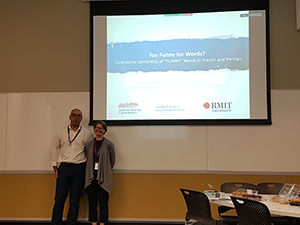 2. Reza Arab (Griffith University) & Kerry Mullan (RMIT University) delivering their talk entitled “Too Funny for Words? Contrastive Semantics of “FUNNY” Words in French and Persian”. |
 3. Wei-Lin Melody Chang & Valeria Sinkeviciute (University of Queensland), delivering their talk entitled ““Is it supposed to be funny?” L2 speakers’ understanding/appreciation of Australian conversational humour |
INPRA conference 21-24 June
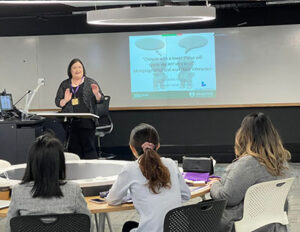 4. Meredith Marra (Victoria University of Wellington), delivering her keynote entitled “’Chinese with a lower status will speak like not very loud’: Metapragmatics and workplace interaction”. |
 6. AHSN members and INPRA conference organizing committee and helpers, Andrea Rodriguez, Nick Hugman, Valeria Sinkeviciute, Amir Sheikhan & Zhiyi Liu (University of Queensland) |
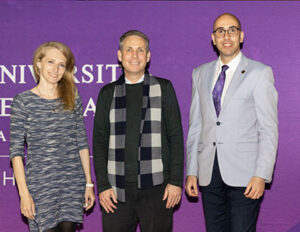 5. AHSN members and INPRA conference organizing committee, Valeria Sinkeviciute, Michael Haugh & Amir Sheikhan (University of Queensland) |
CLASSICAL GREEK COMEDY FOR TODAY –
AHSN REVIEW PANEL MEMBER, MICHAEL EWANS, REPORTS FOR THE AHSN DIGEST
NTC Indie Season
Stray Dogs Theatre Company presents
ARISTOPHANES: LYSISTRATA
The ultimate comedy of sex!
Fed up with their men who have been fighting almost continuously in the war between Athens and Sparta for twenty years, Lysistrata organizes a sex strike of the women. No peace? No sex!
In hilarious scenes rich with bawdy language and action, Aristophanes explores the power struggle that results from the sex strike – and the suffering on both sides as sexual frustration bites!
First performed in 411 BCE, this classic play is Aristophanes’ most popular comedy. Its message of women’s desire for peace – and their conflict with men – still resonates today.
This production features Claudia Bedford in the title role, following her portrayal of Medea in Stray Dogs’ production in 2021. It is translated and directed by Michael Ewans.
This was the publicity flyer for my production of Lysistrata at the Newcastle Theatre Company Wills Auditorium in Lambton, which played from May 25th to 28th. The translation was my own accurate and actable version, first published in 2010 (Aristophanes Lysistrata, The Women’s Festival and Frogs, Oklahoma University Press); unlike almost all previous translations it does not shirk the absolutely explicit sexual language of the original.
A talented cast of 20, including many young people some of whom were new to theatre, responded exceptionally to my direction and presented a show which aroused tremendous enthusiasm in nearly full houses. Any thought that this play might be inappropriate in the post Me Too era was simply obliterated by the play’s combination of serious reflection on the need to make peace rather than wage war (highly topical since Russia’s invasion of Ukraine), and hilarious comic scenes. Its feminist message of women’s right to be heard carried loud and clear.
The photographs (© Jo Roberts photography and Melinda Hicks) below Lysistrata (right) with some of the other women; Myrrhine and Kinesias; and members of the chorus of Older Men and Women.


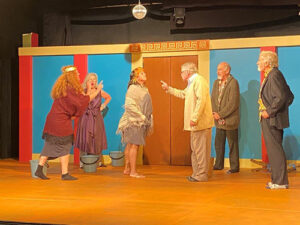
Michael Ewans FAHA
Conjoint Professor of Drama
University of Newcastle
Member’s New Publication
Dr Beatriz Carbajal-Carrera. 2022. Subverting superhero and meiga imaginaries in street art narrative Fenómenas do rural. European Journal of Cultural Studies, 25 (2): 551-571.
Beatriz writes about the article:
Fenómenas do rural is a street art series authored by artist Joseba Muruzábal in Galicia, Spain. The work consists of a growing set of murals across the region featuring local older women who survived the Spanish civil war as supergrandmas. The hyperbolic characteristics of such portrayal aim to acknowledge their lifelong extraordinary contributions to their communities. Humour is present in Fenómenas do rural in two main ways. Firstly, it is a formal property of the murals, which combine incongruous elements to portray the extraordinary strength of the women. Thus, urban, global, science-fiction and superheroic intertextual allusions are merged with rural, local and agricultural allusions. Secondly, according to centralized visions of the Spanish nation, the portrayal of Galician identities has been historically associated with lethargy and backwardness. However, in Fenómenas do rural the protagonists of the murals are portrayed displaying exuberant good humour and joy, countering historical representations of Galician women as meigas (witches).
The article was awarded the SLC ECR Journal Publication Prize by the School of Languages and Cultures at University of Sydney, where Dr Carbajal-Carrera teaches and researches, and it was recently featured in the 2020-2021 Highlights Magazine.
MEMBERS’ NEW BOOK
Humour in Asian Cultures: Tradition and Context
Edited By Jessica Milner Davis
Book series: Studies on Asia in the World
London and NY: Routledge
About this book:
This innovative book traces the impact of tradition on modern humour across several Asian countries and their cultures. Using examples from Japan, Korea, Indonesia and Chinese cultures in Mainland China, Hong Kong and Taiwan, the contributors explore the different cultural rules for creating and sharing humour.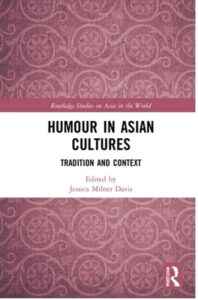
Humour can be a powerful lubricant when correctly interpreted; mis-interpreted, it is likely to cause considerable setbacks. Over time, it has emerged and submerged in different periods and different forms in all these countries but today’s conventions still reflect traditional attitudes to and assumptions about what is appropriate in creating and using humour. Under close examination, Milner Davis and her colleagues show how forms and conventions that differ from those in the west can also be seen to possess elements in common. With examples including Mencian and other classical texts, Balinese traditional verbal humour, Korean and Taiwanese workplace humour, Japanese laughter ceremonies, performances and cartoons, as well as contemporary Chinese-language films and videos, they engage with a wide range of forms and traditions.
This fascinating collection of studies will be of great interest to students and scholars of many Asian cultures, and also to those with a broader interest in humour studies. It highlights the increasing importance of understanding a wider range of cultural values in the present era of globalized communication and the importance of reliable studies of why and how cultures that are geographically related differ in their traditional uses of and assumptions about humour.
Table of Contents
- Humour and cultural context: Tradition and practice in six Asian cultures, Jessica MILNER DAVIS
- Humour as rhetorical discourse in ancient Chinese philosophy: The Works of Mencius, Shirley CHAN
- Humour in the huaben novellas of the Ming Dynasty: The Guzhang Juechen 鼓掌絕塵 in context, Antonio LEGGIERI
- Linguistic devices in traditional forms of Balinese humour, Nengah ARNAWA
- Pluri-modal poetic performance of banter: The Angama ritual on Ishigaki Island, Japan Makiko TAKEKURO
- Themes, cultural context and verbal exchanges in the cartoons of Machiko Hasegawa, Sachiko KITAZUME
- The Makura of rakugo: Tradition and modernity, M.W. SHORES
- To joke or not to joke? Politeness, power and the impact of tradition in Korean workplace humour, Heesun KIM and Barbara PLESTER
- Chinese conversational humour over time: Contemporary practice and tradition in Taiwanese cultures, Wei-Lin Melody CHANG and Michael HAUGH
- We are real friends: Women constructing friendship via teasing in a Chinese reality TV show, Ying CAO
- My Unfair Lady: Gender, sajiao and humour in a Hong Kong TV series, Marjorie K. M. CHAN
https://www.routledge.com/Humour-in-Asian-Cultures-Tradition-and-Context/Davis/p/book/9781032009162
Members’ New Publications
Charles Barbour. 2022. Irony machine: why are AI researchers teaching computers to recognise irony? The Conversation, 25 July. https://theconversation.com/irony-machine-why-are-ai-researchers-teaching-computers-to-recognise-irony-185904
Ying Cao. 2022. We are real friends: Women constructing friendship via teasing in a Chinese reality TV show. In Jessica Milner Davis, ed., Humour in Asian Cultures: Tradition and Context. 211-237. London & NY: Routledge.
Wei-Lin Melody Chang and Michael Haugh. 2022. Chinese conversational humour over time: Contemporary practice and tradition in Taiwanese cultures. In Jessica Milner Davis, ed., Humour in Asian Cultures: Tradition and Context. 188-210. London & NY: Routledge.
Heesun Kim and Barbara Plester. 2022. To joke or not to joke? Politeness, power and the impact of tradition in Korean workplace humour. In Jessica Milner Davis, ed., Humour in Asian Cultures: Tradition and Context. 170-186. London & NY: Routledge.
Jessica Milner Davis. 2022. Humour and cultural context: Tradition and practice in six Asian cultures. In Jessica Milner Davis, ed., Humour in Asian Cultures: Tradition and Context. 1-18. London & NY: Routledge.
Jessica Milner Davis. 2022. Afterword: On words and disciplines in studying humour. In Alberto Godioli, Ted Laros, Brigitte Adriaensen and Andrew Bricker, eds., on ‘Humor and the law’, Special Issue of HUMOR: International Journal of Humor Research, 35 (3): 501-508. ISSN 1613-3722. https://doi.org/10.1515/humor-2022-0041
Robert Phiddian and Richard Scully, with Lucien Leon. 2022. From ScoMo to Albo: How a new cast of characters poses a challenge for cartoonists. The Conversation, 21 June. At: https://theconversation.com/from-scomo-to-albo-how-a-new-cast-of-characters-poses-a-challenge-for-cartoonists-184545
Margaret A. Rose (Cambridge, GB). 2022. Karl Rosenkranz, die Kunst und die Karikatur: Eine Miszelle (Karl Rosenkranz, art and caricature: A Miscellany). In Anne-Rose Meyer, ed., Vormärz, Nachmärz /Risorgimento, Postrisorgimento: Deutsch-italienische Perspektiven: Forum Vormärz Forschung Jahrbuch 2021 (FMV, Vol. 27): 221-231. Bielefeld: Aisthesis Verlag.
M.W. Shores. 2022. The Makura of rakugo: Tradition and modernity. In Jessica Milner Davis, ed., Humour in Asian Cultures: Tradition and Context. 136-178. London & NY: Routledge.
Members’ New Publications
Special Issue on Humour, Laughter and Belonging, The European Journal of Humour Research, 10:2, August 2022:
Guest Editors: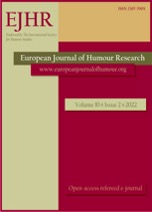 Reza Arab and Jessica Milner Davis
Reza Arab and Jessica Milner Davis
Report by Reza Arab
I am very happy that this Special Issue on “Humour, Laughter and Belonging” for the EJHR is out now, open access. I had the privilege of co-editing with Jessica Milner Davis who was a mentor as well as my co-editor during the publication process.
This is truly a special issue for AHSN, as all papers in it were presented at the 26th AHSN conference in Brisbane in February 2020 which was convened by Cliff Goddard and hosted by the Griffith Centre for Social and Cultural Research at Griffith University. This makes it only the second time that an SI has resulted from one of the AHSN Conferences, taking a selection of our excellent presenters and their papers to a wider audience around the world.
Following the Conference in 2020, Jessica and I invited some of the pool of outstanding papers on the conference theme to be part of this issue. Below, I will briefly introduce these contributions and following that is the list of Contents. The SI is available at: https://www.europeanjournalofhumour.org/ejhr/issue/view/36
- Firstly, Jessica and I present a thematic review of topics involved in studies on humour and belonging. We elaborate on the intricacies of concepts such as humour, sense of humour, belonging and their relationship.
- Goddard and Lambert combine recent developments in the study of laughter in linguistics with those from evolutionary biology to evaluate the possible role of laughter-like vocalisation as a bonding mechanism in early human species. They make a case as to why it does not necessarily make sense to say that laughter evolved “for” its current wide range of modern social functions (i.e. taking the mechanistic view that a phenomenon’s current utility is its reason for existence). Then they evaluate the possible role of laughter-like vocalisation as a bonding mechanism in early human species. Introducing the concept of ‘exaptation’ they establish a clear distinction from the linguistic point of view between the earliest “play-vocalisations”, somewhat later “laughter-like vocalisations” and “modern human laughter”.
- McLachlan bridges the gap between psychology and pragmatics in his examination of laughter and belonging. He argues that a full understanding of how we use laughter requires us to examine it in the same way that we study any other aspect of language, that is, laughter seen within its wider linguistic and social context. He takes laughter as an indexical that serves both a discourse deictic function, designating the utterance/s in which it occurs as non-serious, and a social deictic function, marking the laughing person’s preference for social proximity with fellow interlocutors.
- Rolfe deals with the elusive concept of a unique national humour which, even in humour studies, is so often regarded as a self-evident concept. With a special focus on Australia and the impact of cultural exchanges between nations over time, he takes a historical view of the globalisation process since the 19th century that brought about a degree of Americanisation in both the Australian and British senses of national humour. He highlights how, behind the comforting beliefs of belonging to a nation-state and sharing in its perceivedly unique national sense of humour, there is a huge and historic complexity of tensions and inter-transmissions.
- Chang and Sinkeviciute go beyond the considerable attention that the humorous practices of Anglo-Australians have received to focus on understanding such practices by Australian Mandarin Chinese speakers in today’s multicultural Australia. The authors argue that evaluation of humorous exchanges in Australian English is driven by the Australian Mandarin speakers’ own culturally-informed perceptions that have been conceptualised via internal, emic notions. The concept of familiarity between participants emerges as highly significant in relation to conversational humour and the authors suggest that, at least in this case study, familiarity in relation to humour plays a crucial role in the perception of appropriateness of humorous interaction.
- Mullan explores the use of online humour in a subversive local community Facebook group. She analyses fifteen comments or multi-post threads that included primarily affiliative or aggressive humour directed at the original group, concluding that humour shapes the identity of the group through the members’ shared ideologies and beliefs. This has the effect of reinforcing unity among group members since the feeling of superiority over those being ridiculed coexists with a feeling of belonging. Whether for good or for ill, this humour points to the achievement of freedom and liberty of personal expression.
- Plester, Bentley and Brewer address the important issue of bullying humour in the workplace, which, as they show, represents the dark side of organisational behaviour. They argue that the reason for this occurring and also being tolerated is the compelling human need for belonging that makes itself felt even in this extreme organisational culture. Such dangerous practices, they argue, can easily become engrained and accepted as part of organisational culture so that employees feel compelled to accept and reinforce this practice, simply in order to belong at work.
- Marra looks at humour and the path taken by newcomers in organisations to gain place and status. Marra, who delivered a keynote talk at the AHSN2020, shows that this path involves cooperating with others in interactions that necessarily include engaging with humour and laughter as a way of indicating belonging. She argues that laughter by newcomers in such situations can be a laughing with that signals belonging, or it may be a laughing along that signals a temporary and temporising fit, without full participation and acceptance. No laughter at all can be perceived by co-workers as a demonstration that the person does not meet ‘our’ sociopragmatic expectations, in which case the non-laugher faces the ‘linguistic penalty’ and social reality of exclusion.
Contents
- Reza Arab & Jessica Milner Davis – Humour and belonging: a thematic review, 1-13
- Cliff Goddard & David Lambert – Laughter, bonding and biological evolution, 14-28
- Angus McLachlan –The role of laughter in establishing solidarity and status, 29-50
- Mark Rolfe – The idea of national humour and Americanisation in Australia and Britain, 51-73
- Wei-lin Melody Chang & Valeria Sinkeviciute –The role of ‘familiarity’ in Mandarin Chinese speakers’ metapragmatic evaluations of Australian conversational humour, 74-95
- Kerry Mullan –, On the “Dark Side”: Facebook humour used for inclusion and exclusion, 96-115
- Barbara Plester, Tim Bentley & Emily Brewer – ‘It only hurts when I laugh’: Tolerating bullying humour in order to belong at work, 116-134
- Meredith Marra – Laughing along? Negotiating belonging as a workplace newcomer, 135-151
Thanks to all the contributors and a special thanks to the Editorial team at the European Journal, led by Władysław Chłopicki, Jagellonian University, Krakow.
Reza Arab, Griffith University
Book Review Published by AHSN Member
AHSN Member Sarah Balkin (University of Melbourne) reports that her review of the recent memoir by the innovative Australian stand-up comic Hannah Gadsby, Ten Steps to Nanette, has appeared in Australian Book Review.
At the AHSN Conference at RMIT University Melbourne in 2019, Sarah gave a fine presentation on on Gadsby’s innovative work, including her show, Nanette, which won prizes in Adelaide and Melbourne before touring around the world.
The review is available at: https://www.australianbookreview.com.au/abr-online/current-issue/978-june-2022-no-443/9176-sarah-balkin-reviews-ten-steps-to-nanette-by-hannah-gadsby
Book Notices – August 2022
The Punk Turn in Comedy: Masks of Anarchy

Author: Krista Bonello Rutter Giappone
Book series: Palgrave Studies in Comedy
About this book
This book examines the interconnections between punk and alternative comedy (altcom). It explores how punk’s tendency towards humour and parody influenced the trajectory taken by altcom in the UK, and the punk strategies introduced when altcom sought self-definition against dominant established trends. The Punk Turn in Comedy considers the early promise of punk-comedy convergence in Peter Cook and Dudley Moore’s ‘Derek and Clive’, and discusses punk and altcom’s attitudes towards dominant traditions. The chapters demonstrate how punk and altcom sought a direct approach for critique, one that rejected innuendo, while embracing the ‘amateur’ in style and experimenting with audience-performer interaction. Giappone argues that altcom tended to be more consistently politicised than punk, with a renewed emphasis on responsibility. The book is a timely exploration of the ‘punk turn’ in comedy history, and will speak to scholars of both comedy and punk studies.
Table of contents:
- Introduction
- Peter Cook: Missing Links
- The ‘Alternative’
- Attitudes Towards the Past
- Styling the Amateur
- The Role of the Audience
- Modes of Dis-/Engagement
- Power Play
- ‘Style Without Affectation’: Honesty and Performance
- Boundaries of the (Un)Said
- Conclusion
——————————
Transgressive Humor of American Women Writers
Editor: Sabrina Fuchs Abrams
Book series: Palgrave Studies in Comedy
About this book
This collection is the first to focus on the iconoclastic and transformative power of American female humorists. It explores the work of authors and comediennes such as Samantha Bee, Amy Schumer, Lucille Clifton, Constance Rourke, Carolyn Wells, and Lynne Tillman while drawing on various theories of humor including the incongruity superiority/disparagement, and relief theories. The chapters draw from the experiences of women from a variety of racial, class, and gender identities and encompass a variety of genres and comedic forms including poetry, fiction, prose, autobiography, graphic memoir, comedic performance, and new media.Transgressive Humor of American Women Writers will appeal to a general educated readership as well as to those interested in women’s and gender studies, humor studies, urban studies, American literature and cultural studies, and media studies.
of authors and comediennes such as Samantha Bee, Amy Schumer, Lucille Clifton, Constance Rourke, Carolyn Wells, and Lynne Tillman while drawing on various theories of humor including the incongruity superiority/disparagement, and relief theories. The chapters draw from the experiences of women from a variety of racial, class, and gender identities and encompass a variety of genres and comedic forms including poetry, fiction, prose, autobiography, graphic memoir, comedic performance, and new media.Transgressive Humor of American Women Writers will appeal to a general educated readership as well as to those interested in women’s and gender studies, humor studies, urban studies, American literature and cultural studies, and media studies.
Table of contents (12 chapters)
- No Joke: Transgressive Humor of American Women Writers, Sabrina Fuchs Abrams
- “To Amuse Intelligently and Cleverly”: Carolyn Wells and Literary Parody, Margaret D. Stetz
- From Headlines to Punchlines: Suffragist Humor in the Popular Press, Amanda T. Smith
- The Scholarly Transgressions of Constance Rourke, Sean Zwagerman
- Embattled Embodiment: The Sexual/Intellectual Politics of Humor in Mary McCarthy’s Writing, Sabrina Fuchs Abrams
- Humor as Clap Back in Lucille Clifton’s Poetry, Mary Catherine Loving
- Fidel and Gummy Bears?: Transgressive Humor in Contemporary Latina Fiction, Sonia Alvarez Wilson
- Humor, Gentrification, and the Conservation of Downtown New York in Lynne Tillman’s No Lease on Life, Diarmuid Hester
- Funny Women: Political Transgressions and Celebrity Autobiography, Anne-Marie Evans
- Roz Chast: From Whimsy to Transgression, Linda A. Morris
- “My Mom’s a Cunt”: New Bawds Ride the Fourth Wave, Joanne Gilbert
- Dueling Discourses: The Female Comic’s Double Bind in the New Media Age, Rebecca Krefting
—————————————
Comedy and the Politics of Representation: Mocking the Weak
Editors: Helen Davies, Sarah Ilott
Book series: Palgrave Studies in Comedy
About this book
This edited collection explores the representations of identity in comedy and interrogates the ways in which “humorous”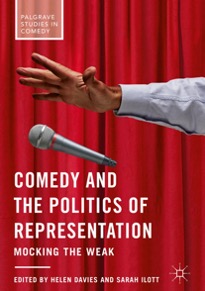 constructions of gender, sexuality, ethnicity, religion, class and disability raise serious issues about privilege, agency and oppression in popular culture. Should there be limits to free speech when humour is aimed at marginalised social groups? What are the limits of free speech when comedy pokes fun at those who hold social power? Can taboo joking be used towards politically progressive ends? Can stereotypes be mocked through their re-invocation? Comedy and the Politics of Representation: Mocking the Weak breaks new theoretical ground by demonstrating how the way people are represented mediates the triadic relationship set up in comedy between teller, audience and butt of the joke. By bringing together a selection of essays from international scholars, this study unpacks and examines the dynamic role that humour plays in making and remaking identity and power relations in culture and society.
constructions of gender, sexuality, ethnicity, religion, class and disability raise serious issues about privilege, agency and oppression in popular culture. Should there be limits to free speech when humour is aimed at marginalised social groups? What are the limits of free speech when comedy pokes fun at those who hold social power? Can taboo joking be used towards politically progressive ends? Can stereotypes be mocked through their re-invocation? Comedy and the Politics of Representation: Mocking the Weak breaks new theoretical ground by demonstrating how the way people are represented mediates the triadic relationship set up in comedy between teller, audience and butt of the joke. By bringing together a selection of essays from international scholars, this study unpacks and examines the dynamic role that humour plays in making and remaking identity and power relations in culture and society.
Table of contents (14 chapters)
- Mocking the Weak? Contexts, Theories, Politics, Helen Davies, Sarah Ilott
- Taking Liberties? Free Speech, Multiculturalism and the Ethics of Satire, Anshuman A. Mondal
- Openness, Otherness, and Expertise: Uncertainty and Trust in Stewart Lee’s Comedy Vehicle, Rob Hawkes
- British Multiculturalism, Romantic Comedy, and the Lie of Social Unification, Sarah Ilott
- Parodying Racial Passing in Chappelle’s Show and Key & Peele, Janine Bradbury
- Blackness and Banal Whiteness: Abjection and Identity in the Italian Christmas Comedy, Alan O’Leary
- Sexual and National Difference in the High-Speed, Popular Surrealism of Tommy Handley and Ronald Frankau’s Double Acts, 1929–1936, Neil Washbourne
- From Terry and June to Terry and Julian: June Whitfield and the British Suburban Sitcom, Rosie White
- Saintly Cretins and Ugly Buglys: Laughing at Victorian Disability in Hunderby, Helen Davies
- Standing Up to False Binaries in Humour and Autism: A Dialogue, Kate Fox
- Comedy and the Representation of the British Working Class from On the Buses to This Is England ’90. Tracy Casling
- Theorising Post-Socialist Sitcom: Imported Form, Vernacular Humour and Taste Boundaries on the Global Periphery, Dejan Jontes, Andreja Trdina
- Smile, Hitler? Nazism and Comedy in Popular Culture, Jason Lee
- POTUS Stand-Up: The White House Correspondents’ Dinner, Sheryl Tuttle Ross
——————————————
Comedy and Critical Thought: Laughter as Resistance
Edited by Iain Mackenzie; Fred Francis and Krista Bonello Rutter Giappone
Rowman & Littlefield Publishers
Series: Experiments/On the Political
About this book:
Throughout history, comedians and clowns have enjoyed a certain freedom to speak frankly often denied to others in hegemonic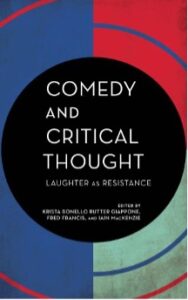 systems. More recently, professional comedians have developed platforms of comic license from which to critique the traditional political establishment and have managed to play an important role in interrogating and mediating the processes of politics in contemporary society.
systems. More recently, professional comedians have developed platforms of comic license from which to critique the traditional political establishment and have managed to play an important role in interrogating and mediating the processes of politics in contemporary society.
This collection will examine the questions that arise when of comedy and critique intersect by bringing together both critical theorists and comedy scholars with a view to exploring the nature of comedy, its potential role in critical theory and the forms it can take as a practice of resistance.
Table of Contents
- Introduction: Setting the Agenda, Krista Bonello Rutter Giappone, Fred Francis and Iain MacKenzie
- PART I: COMEDY, CRITIQUE AND RESISTANCE
- Diagrams of Comic Estrangement, James Williams
- ‘Against the Assault of Laughter’: Differentiating Critical and Resistant Humour, Nicholas Holm
- Can We Learn the Truth from Lenny Bruce? A Careful Cognitivism about Satire, Dieter Declercq
- Laughter, Liturgy, Lacan and Resistance to Capitalist Logic, Francis Stewart
- Humitas: Humour as Performative Resistance, Kate Fox
- PART II: LAUGHTER AS RESISTANCE?
- Conformist Comedians: Political Humour in the Eighteenth-Century Dutch Republic, Ivo Nieuwenhuis
- First World War Cartoon Comedy as Criticism of British Politics and Society, Pip Gregory
- A Suspended Pratfall: Mimesis and Slapstick in Contemporary Art, Levi Hanes
- ‘Life’ in Struggle: The Indifferent Humour of Beckett’s Prose Heroes, Selvin Yaltir
- ‘Holiday in Cambodia’: Punk’s Acerbic Comedy, Russ Bestley
- ‘What Can’t Be Cured Must Be Endured’: The Postcolonial Humour of Salman Rushdie, Sami Shah and Hari Kondabolu, Christine Caruana
- Political Jester: From Fool to King 201, Constantino Pereira Martins
- Three Easy Steps to a New You? Or, Some Thoughts on the Politics of Humour in the Workplace . . ., Adrian Hickey, Giuliana Monteverde and Robert Porter
https://rowman.com/ISBN/9781786604064/Comedy-and-Critical-Thought-Laughter-as-Resistance
——————————————-
Muslims and Humour
Essays on Comedy, Joking, and Mirth in Contemporary Islamic Contexts
Edited by Bernard Schweizer and Lina Molokotos-Liederman, with Yasmin Amin
About this book:
This thought-provoking collection offers a multi-disciplinary approach on the subject of humour, Muslims, and Islam. Beginning with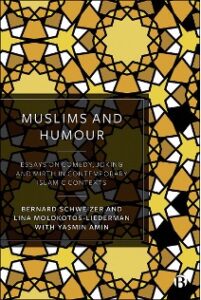 theoretical perspectives and scriptural guidance on permissible and restricted humour, the volume presents a variety of case studies about Muslim comedic practices in various cultural, political, and religious contexts.
theoretical perspectives and scriptural guidance on permissible and restricted humour, the volume presents a variety of case studies about Muslim comedic practices in various cultural, political, and religious contexts.
This unprecedented scholarship sheds new light on common misconceptions about humour and laughter in Islam and deftly tackles sensitive themes from blasphemy to freedom of speech.
Table of Contents:
Introduction – Bernard Schweizer and Lina Molokotos-Liederman
PART I Theoretical Perspectives on Islam and Humour
1 Ridicule in the Qur’an: The Missing Link in Islamic Humour Studies – Mostafa Abedinifard
2 Laughter in the Discursive Tradition? Emotions of Muḥammad as the Topic of a Pious Arabic-English Reader – Georg Leube
3 Humour in Islamic Literature and Muslim Practices: Virtue or Vice? – Walid Ghali
PART II Muslim Humour Practices in Islamicate Societies: Textual Media
4 Using/Abusing the Qur’an in Jocular Literature: Blasphemy, Qur’anophilia, or Familiarity? – Yasmin Amin
5 A ‘Stupid Lur’ Mocks Allah and Mullah: Sociocultural Implications of the Luri Jokes Cycle – Fatemeh Nasr Esfahani
PART III Muslim Humour Practices in Islamicate Societies: Visual Media and Performance
6 Al- Bernameg: How Bassem Youssef Ridiculed Religious Fundamentalists and Survived the ‘Defamation of Religion’ Charge – Moutaz Alkheder
7 Arab Cartoonists and Religion: The Interdependence of Transgression and Taboo – Chourouq Nasri
8 Hizbullah’s Humour: Political Satire, Comedy, and Revolutionary Theatre – Joseph Alagha
9 ‘Putting the Fun Back into Fundamentalism’: Toying with Islam and Extremism in Comedy – Mona Abdel-Fadil
PART IV Muslim Comedy in North America
10 Queering Islam in Performance: Gender and Sexuality in American Muslim Women’s Stand-up Comedy – Jaclyn A. Michael
11 Comedy as Social Commentary in Little Mosque on the Prairie: Decoding Humour in the First ‘Muslim Sitcom’ – Jay Friesen
Conclusion – Bernard Schweizer and Lina Molokotos-Liederman
Bibliography on Islam and Humour
https://bristoluniversitypress.co.uk/muslims-and-humour
IN ON THE JOKE:
Launch of the Summer 2022 Issue of ArabLit Quarterly
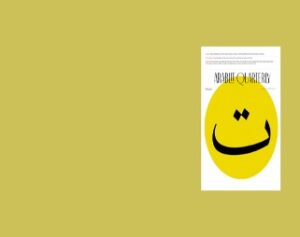
By Anam Zafar
“The Joke: Where Did it Come From, Where Does it Go?” is a question Sanaa El Aji asks in her essay “How Moroccans Laugh,” translated for this issue by Leonie Rau. For El Aji, it’s impossible to say exactly where a joke begins. The joke, she insists, is “an orphan without origin or lineage, and no way of establishing one. Poor thing! It is everyone’s property, inherited by the collective oral culture and cultivated according to its needs and developments.”
And so it was with the jokes and wry anecdotes of classical Arabic literature, which were compiled, copied, and re-compiled throughout the centuries. A number are shared here, from those assembled by al-Jawzi (translated for this issue by Sarah Aldawood), the tales of lesser-known jesters compiled by Brian Powell, to the tales translated from the anonymous “Solace for the Traveler” by Hacı Osman Gündüz (Ozzy).
And what is it that readers want from a funny story? As Ozzy says in the introduction to his translation of the anonymous and undated “Solace and Entertainment for the Traveler,” it was both companionship and stories to tell among companions.
And while entertainment is important, by placing importance on solace, it shows that there is more to humor than entertainment. The funny can be a balm for the painful, paving a way toward the broaching of distressing topics and opening the door to empathy—in other words, the funny can be used for subject matter that is really not funny. This is the approach taken in Mazen Kerbaj’s comic “Real Life Stories of Syrian Refugees” that takes the international, and especially European, response to the Syrian refugee crisis as its focal point, and by Maya Abu al-Hayyat who, in her poem “My Laugh,” translated by Fady Joudah, writes of being “exhausted from smuggling my laugh out of my psychology, /smuggling my laugh out of the fates of those I love, /out of videos of slaughtered children.”
You can order the Summer 2022 JOKE issue of ArabLit Quarterly in print via GumRoad and Amazon; digitally on GumRoad or Exact Editions; with issues forthcoming at the best bookshops, including Khan Aljanub.
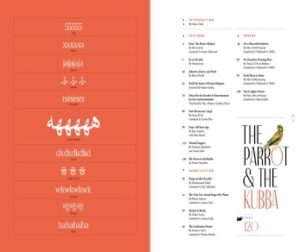
And when pain becomes anger, humor can transform into a political weapon. The essay “In on The Joke” spotlights the last decade of Egypt’s underground music scene, when musicians have “used humor to create a narrative that loosens the dominance of the hegemon’s master narrative” and “underscore[s] the absurdities of living in contemporary Egypt.” Among the songs examined is “Balaha,” a song by Ramy Essam for which his Egyptian passport was revoked and seven others arrested. Indeed, humor is often seen as the most dangerous of literary forms. Deemed disrespectful to Islam and Morocco’s king, El Aji’s lighthearted essay led to the suspension of Nichane magazine as well as fines and suspended prison sentences for the author and editor. The essay and its jokes get a second life here, in Leonie Rau’s translation.
The translation of humor was an important part of the behind-the-scenes work on this issue, so we wanted to bring it to the foreground as well. Humor is often considered particularly difficult to translate, as a joke can easily become unfunny in translation. To avoid this happening, the translator must ask: What is inherent to the joke and must be preserved in translation, and what must be changed to avoid killing it? This question is explored in “Twisted Tongues,” a collaborative piece that celebrates translators’ ingenuity and creativity in overcoming these challenges.
I am glad that this issue brings together so many iterations of humor–from scatalogical to sexual, from sophisticated to light–to celebrate just how wide this genre is in Arab literature and culture. I hope you find entertainment in some pieces, solace in others, and that you encounter jokes that surprise you with their construction and purpose. Perhaps the tour of humor presented in this issue can be best summed up in Muhammad Zafzaf’s short story Borges in the Hereafter, translated by Lily Sadowsky: “We just want to entertain you and maybe right some wrongs in the process.”
Late Notice: Call for Papers
“American Humor/Humor in (the) America(s)”, Americana Special Issue
Guest editor: Zsofia Anna Toth, PhD (University of Szeged)
We invite papers to be published in a Special Issue dedicated to the questions and expressions of American humor in AMERICANA, E-Journal of American Studies in Hungary (https://americanaejournal.hu/) in the Fall of 2022. We would like to cover as many aspects of this varied field as possible so all kinds of humor producers and humorous products are welcome to be discussed and analyzed that belong to American literature and culture. The alternative title also suggests that works can also address questions of the Americas, how humor can also be an expression of various interpretations of America as well as American identity and how these meanings can be expanded even if the primary focus is on the United States. Humorous works and performances that discuss variations on/of what it means to be an American, which reinterpret what/who ‘the ideal American’ is, are of great interest especially from minority points of view that also include questions of race, ethnicity, nationality, gender, sexual orientation, class, ableism etc. We intend to investigate the issue of American humor from as many angles and perspectives as well as timespan (including works from previous centuries up to our current times) as possible primarily within the fields of literature, culture and history aiming towards interdisciplinarity.
If you are interested, please, send me a 250-word abstract and a brief bio by the 10th of June, 2022 to tothzsofianna@gmail.com. The deadline for the full papers of 5000-7000 words is the 9th of September, 2022.
Two Calls for Humour Studies Conference to be held in France
A conference on the reception of humour is being organised by the French humour studies group RIRH, titled “Les publics de l’humour”. It will take place from 24-25 November at Université Sorbonne Nouvelle in Paris. An abridged call for papers in English is below with full details in French at: https://rirh.hypotheses.org/. The conference will mainly be held in French, though presentations in English matching the conference theme will be considered.
In addition, a conference on “The pragmatics of cringe humor on the screen and on digital media” will take place 4-5 May 2023 at the Saint-Charles Research Centre, the University of Montpellier. The deadline for submission of abstracts is 20 November 2022. Full details at: https://cringe-humor.sciencesconf.org/
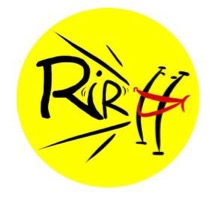
RIRH – Réseau interdisciplinaire de recherches sur l’humour – https://rirh.hypotheses.org/
Les publics de l’humour – International conference on humour reception
Université Sorbonne Nouvelle, Paris, 24-25 November 2022
The French-speaking humour research network RIRH (Réseau interdisciplinaire de recherches sur l’humour, https://rirh.hypotheses.org/) is organising its first international conference on the topic of Les publics de l’humour, aiming to take stock of recent research into the audiences and more broadly the reception of comedy and humour.
Originally scheduled for 2020, the conference follows on from workshops organised by RIRH on the staging of humour (Bordeaux, 2018) and the language(s) of humour (Dijon, 2019), and will be held at Sorbonne Nouvelle Université in Paris on 24-25 November 2022. The conference will be mainly held in French but submissions in English related to the theme are welcome in a spirit of international exchange.
The conference aims to bring together perspectives and methodologies from disciplines including but not limited to literature, history, sociology, translation studies, theatre studies, communication studies and political science, the better to understand how humour and comedy audiences can be defined, identified, classified and studied, and how the process of reception relates to other debates around humour and comedy. Different scholars and scholarly traditions have tended to explore humour – whether in the broadest sense of the word in English, in its narrower etymological sense, or as the performance of a comedian or humorist – as something inclusive or offensive, pleasurable, ambivalent, conformist or subversive. The development of humour and comedy studies as academic fields has given rise to useful frameworks for approaching these complex social phenomena, although research has arguably tended to focus more on humour production, through the analysis of text, body and performance, than on audience reception, or the question of who “laughs at”, “laughs with” or simply “laughs”.
The organisers of Les publics de l’humour aim to redress this balance, and invite contributions that address questions including:
- Can we reconstruct a history of humour/comedy audiences?
- How can we study contemporary humour/comedy audiences?
- How are humour/comedy audiences perceived and represented?
- How do humour/comedy audiences reflect the politics of humour?
- Can creative action-research educate audiences about humour and comedy?
Abstracts (in French or English) of 3000 characters or less should be sent by email by the extended deadline of 20 July 2022, to the address association. rirh@gmail.com
This document is an abridgement of the full call for papers, available (in French) at https://rirh.hypotheses.org/.
Fees for the conference will be minimal. Any queries regarding the conference or the RIRH network should be sent to the above email address.
Announcing a new Humour Studies Review in French

Bonjour!
L’Observatoire de l’humour (OH) est heureux de vous présenter le premier numéro de la revue Sérieux? Humour : Savoirs et pratiques. L’Observatoire de l’humour (OH) is happy to present the first number in the new review, Serieux? Humour: Information and Practice.
Cette nouvelle revue a pour objectif d’offrir une tribune pour la diffusion de recherches académiques, de réflexions et de commentaires sur l’humour en français. Basée au Québec et comportant un comité de lecture de différents horizons, elle est ouverte à toute la francophonie et se veut multidisciplinaire et interdisciplinaire. De plus, la revue Sérieux? Savoirs et pratiques est disponible en ligne et en libre-accès. La revue comporte deux grandes sections : la première s’intéresse aux Savoirs, afin de mieux comprendre et d’analyser le rôle de l’humour dans toutes les sphères de la société, par le biais de différents domaines de recherche, notamment la sociologie, l’histoire, la science politique, la communication, la littérature, la philosophie, la gestion, etc. La section Pratiques cherche quant à elle à mieux saisir ce qui caractérise le domaine de l’humour, soient les débats et préoccupations qui l’animent, son histoire et les processus créatifs de ceux et celles qui le pratiquent.
Communiqué de presse :
Numéro complet PDF :
https://observatoiredelhumour.org/wp-content/uploads/2022/06/SERIEUXrevuevol1no1202206juinfinal.pdf
PDF des articles et sections
http://observatoiredelhumour.org/serieux
Bonne lecture
François et Catherine
serieux@sprott.carleton.ca
Sérieux? Humour : Savoirs et Pratiques
François Brouard, DBA, FCPA, FCA
Full Professor / Professeur titulaire
Sprott School of Business, Carleton University
Catherine Côté, Ph.D.
Professeure agrégée
École de politique appliquée
Université de Sherbrooke

